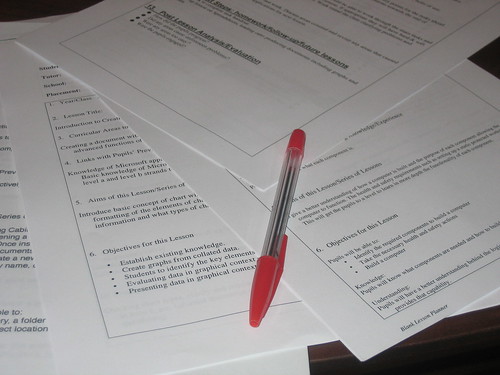
Table of Contents
A teacher at a workshop once told me, “I keep my student so busy, they don’t have time to think.” I hope she was joking, because helping students learn how to engage in critical thinking—problem solving, creating, analyzing—and to develop their own strategies for self-evaluation and learning is one of the most important things we do.
Did you ever look at some students’ work and wonder
What Were They Thinking? The authors of this article discuss how to design and support learning activities that will help students develop critical thinking skills: connecting to background knowledge, creating sensory images (nonlinguistic representations), determining importance (prioritizing), questioning, inquiry (problem solving, inferring, predicting, synthesizing. They provide sample lessons that teach the big picture and focus on real-world applications.
Even if you don’t have funds for elaborate materials or field trips to exotic locations, you can still
Rock On! using samples of local gravel, which can be the basis of activities to foster observation and critical thinking. It was interesting that the activity was also included in a PD workshop, and teachers thought of even more ideas for extending the activity. If you want to see where an interest like this can lead, check out the
Science of Sand website. [SciLinks:
Rocks,
Erosion]
Do we focus so much on getting the “right” answer that we overlook how to analyze our work? Does it make sense?
Are You Certain? If your students do many discovery investigations, error analysis is an essential skill, and the author describes several strategies for guiding students through the process. The article includes a helpful graphic on the experimentation in science classrooms.
One aspect of critical thinking is reading between and beyond the lines to determine
What’s Missing? The author of this article uses articles from the media (a list is provided) to help students indentify the environmental stories and questions hidden in the articles. She emphasizes the importance of teacher modeling how to think through the process and provides examples and a guide to writing a “thoughtful” response. She also suggests modifying the activity with cooperative learning. And I really liked her idea of using online discussions/forums.
In the classroom, teachers usually focus on what (and how much) students know. But the author of
Exploring the Unknown notes that “Scientists get excited about what they
don’t know” (the italics are mine). The article describes a project in which students explore real-life investigations into the classroom, not necessarily to find answers but to learn how to think like scientists. There are resources to help student learn to make scientific claims, justify them with evidence, and evaluate the quality of the evidence. (see the SS article for more on argumentation). [Scilinks:
Aquifers]
Next month is the celebration of
Earth Day 2012. This article has a brief history of the event and a list of web-based resources for related activities. (see the March 2012 issue of
Science & Children for more ideas).
Don’t forget to look at the
Connections for this issue (March 2012). Even if the article does not quite fit with your lesson agenda, this resource has ideas for handouts, background information sheets, data sheets, rubrics, etc.





